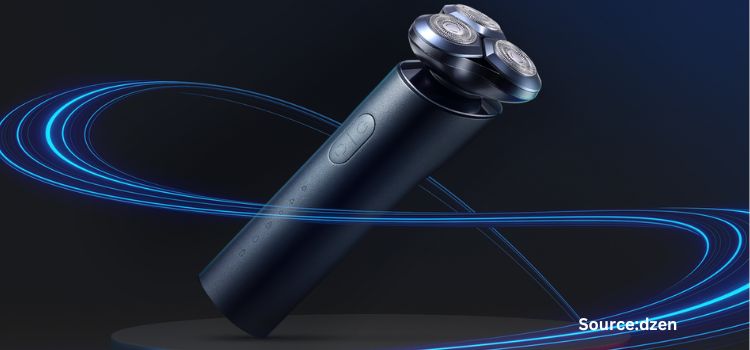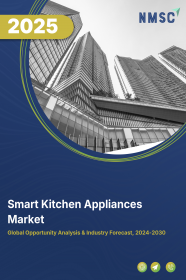
Smart Kitchen Appliances Market by Product Type (Ovens, Refrigerators, Dishwashers, Cookware and Cooktops, Coffee Makers, and Others), by Connectivity type (Bluetooth, Wi-Fi, NFC, IoT, Voice-Activated Systems and Others), by Technology (AI-Enabled Appliances, Sensor and Touch Controls, Energy-Efficient Technology, and Others), by Application (Commercial and Residential), by Distribution Channel (Online and Offline)–Global Opportunity Analysis and Industry Forecast 2025-2030
US Tariff Impact on Smart Kitchen Appliances Market
Trump Tariffs Are Reshaping Global Business
Smart Kitchen Appliances Market Overview
The global Smart Kitchen Appliances Market size was valued at USD 14.50 billion in 2024 and is predicted to reach USD 31.67 billion by 2030 with a CAGR of 14.0% from 2025-2030.
The factors such as increasing technological advancement, urbanization along with the rising trend of consumer preferences for energy efficient solution drives the market growth. However, the high cost of poses significant challenges to smart kitchen appliances market expansion. On the other hand, smart kitchen devices featuring automated cooking options, live recipe guidance, and built-in virtual assistants allow users to cook meals more effectively. Moreover, leading companies such as LG, Panasonic, Samsung, and Haier are executing various strategies, including launching new products and forming partnerships, to strengthen their market presence and broaden their product range.
These initiatives are anticipated to foster innovation and adoption in the smart kitchen appliances sector, establishing an automated and efficient smart kitchen environment. As IoT and AI evolves, companies are emphasizing the creation of more intelligent assistance systems, aiding in efficient and automated operations. As the market develops, the rising need for more sophisticated, easy-to-use, and effective solutions is anticipated to drive additional growth.
Rising Technological Investment Worldwide Boost the Market Growth
The increasing technological advancement in smart home appliances is significantly boosting the smart kitchen appliances market by fostering seamless integration, enhanced convenience and interconnected functionality. Smart home ecosystems, driven by advancement in IoT and AI, allow smart kitchen modules to operate in sync with other connected devices, enabling features such as centralised control, remote monitoring and voice activated commands.
According to reports published by IoT M2M Council, 2023, the demand for smart homes approximately increased to USD 29 billion in 2022 and is expected to reach USD 70 billion by the end of 2030. This growing demand for smart homes is expanding the smart kitchen appliances industry as consumers seek interconnected, efficient solution for modern lifestyle.
Demand for Urbanisation Is Fostering the Market Growth
Furthermore, growing inclination towards urbanization and smaller living space is driving the demand for smart kitchen appliances as consumers seek for smart kitchen solutions due to its cost effective and compact design traits. According to reports published by the World Bank Group 2023, currently 56% of the world’s population are sheltered in cities with roughly 4.40 billion population are urban dwellers and the growth is expected to double by 2050.
Due to lack of sufficient living space in the cities, mankind is more inclined towards smart kitchen devices that demands less space for installation purpose and will assist the trend towards urbanisation to grow strong.
Efficient Energy Usage is Fuelling the Industry Growth
In addition, the growing consumer preferences for energy efficient and time saving solution is another driver boosting the demand for smart kitchen appliances market. As per reports published by Rediff.com, September 2024, Daewoo now ventured into smart kitchen and home automation industry to capture large share in the market in order to launch products namely toasters, sandwich makers and many others. This launch will ensure consumption of energy to be minimum and sufficient enough to save the time in order to process the edible to make it fit for consumption.
High Cost Hinders the Market Growth
However, the high initial cost of smart kitchen appliances limits their accessibility, especially to price sensitive consumers. This cost barrier is further accompanied by additional expenses for installation, maintenance and upgrades, making it challenging for the market to penetrate middle- and lower-income segments.
Integration with IoT and AI Create Future Opportunities
On the contrary, smart kitchen appliances, equipped with features including automated cooking settings, real-time recipe guidance and integration with smart technologies such as IoT kitchen devices, AI enable user to prepare meals more efficiently and with better results. According to reports published by IoT M2M Council, 2022, Samsung launched 6-smart thing services where cooking is one of the vital launches.
This launch by Samsung promises the user to accomplish a good list of tasks ranging from finding recipes and auto-setting appliances to managing shopping lists and preserving food. This launch is highly beneficial to the entire mankind with addon benefits to the working officials by supporting the trend towards automation and modernization.
Market Segmentations and Scope of the Study
The smart kitchen appliances market report is segmented on the basis of product type, connectivity type, technology, application, distribution channel and region. On the basis of product type, the market is divided into ovens, refrigerators, dishwashers, cookware and cooktops, coffee makers and others. On the basis of connectivity type, the market is segmented into Bluetooth, Wi-Fi, NFC (Near Field Communication), IoT (Internet of Things), voice-activated systems and others. Based on technology, the market is segmented into AI (Artificial Intelligence)-enabled appliances, sensor and touch controls, energy-efficient technology, remote control and monitoring and others.
On the basis of application, the industry is bifurcated into commercial use and residential use. Based on distribution channel the market is divided into online and offline markets. Further the offline distribution channel is divided into specialty stores, consumer electronics stores, and hypermarkets/supermarkets. Regional breakdown and analysis of each of the aforesaid segments includes regions comprising of North America, Europe, Asia-Pacific, and Rest of The World (Row).
Geographical Analysis
North America dominates the smart kitchen appliances market and is expected to maintain this position during the forecast period. This is due to increase in government investments that is driving consumer interest in smart kitchen devices. As per reports of International Energy Agency (IEA), 2023, the U.S. government invested nearly USD 85 billion in order to promote the use of smart grid systems including smart kitchen products. The subsidy and tax incentives supported by the U.S. government for the residents over the region is promoting the demand for installation of smart kitchen products. This initiative by the government already accelerated the demand for smart kitchen devices and is supposed to accelerate more in future.
The inclination towards the use of sustainable energy is increasing the need for eco-friendly kitchen devices and promoting advancements in the smart kitchen appliances market. According to reports published by IEA, 2022, Canada set an ambitious target to cut greenhouse gas emissions by 40-45% within 2030 and to reach net zero emissions by 2050, also the nation stands second in electricity production and experienced a growth in the same by 3% within 2023. This target to get accomplished is further aided by the growing demand of smart kitchen products, as the use of these smart products ensure zero addition towards the pollution curve.
Moreover, the Asia-Pacific region is anticipated to experience steady in the smart kitchen appliances market growth during the forecast period. This is propelled by the growth of urbanization in the region, as consumer seek use of modern and efficient devices for their day-to-day tasks completions to elevate their household chores experiences, especially in terms of cooking consumables.
As per reports published by Observer Research Foundation, 2023, China is expected to be the largest urban population close to 1 billion and the urbanisation rate is expected to rise to 73.2% by 2050. This rapid growth towards urbanization is highly demanding the use of smart kitchen appliances due to its easy installation, compact size and portable nature. As the growth towards modernization increases more demand for smart systems will keep on triggering in order to maintain a proper balance.
In addition, the rise in number of working professionals in the region is fuelling for smart kitchen appliances market demand by enabling seamless integration with smart devices, offering less individual involvement in completion of day-to-day activities by merging the technology in stoves, ovens, coffee makers and others.
According to reports published by the Press Information Bureau, 2024, employment in India increased by 36% within 2023 and is landed to 170 million jobs. This growth in the number of working professionals demand use of smart kitchen products to ensure efficient use of time and also provides safety due to the out power off system integrated in the smart kitchen modules.
Competitive Landscape
Various key players operating in the smart kitchen appliances industry includes Panasonic Life Solutions India Private Limited, LG Electronics Inc., Whirlpool Corporation, Haier Group Corporation, AB Electrolux, BSH Hausgeräte GmbH, GE Appliances, a Haier company, Midea Group Co., Ltd., Miele & Cie. KG, Breville Group Limited, Samsung Electronics Co., Ltd., Siemens AG, Dacor, Inc., Daewoo Electronics Corporation, IFB Industries Limited and others. These companies are adopting strategies such as collaboration and product launch to remain dominant in the market.
For instance, in December 2024, LG revealed introduce an over-the-range microwave and a slide-in double oven induction range by 2025, featuring a microwave that has three cameras, enabling users to monitor their food without releasing heat. Additionally, the microwave is equipped with a 27-inch 1080p screen, integrated speakers, and Bluetooth connectivity, enabling users to stream content while in the kitchen.
Additionally, in January 2024, Panasonic and Fresco, expanded their partnership at CES (Consumer Electronics Show) 2024 aimed at launching an AI-driven cooking assistant. Panasonic combining this with Fresco’s AI capabilities, will deliver best smart kitchen solutions to its customers worldwide.
Furthermore, in April 2024, Samsung launched its AI kitchen appliances particularly Bespoke 4-Door Flex refrigerators with high technology and connectivity that simplify meal planning and cooking integrated with built-in camera to identify food items and accurately keep track of what goes in and out of the fridge. Additionally, it is blended with a 32-inch display with built-in-apps pre-installed that aids the user to watch their favourite shows, find and follow recipes and order pantry staples.
Moreover, in November 2024, Haier launched its new graphite series refrigerators, elevating home refrigeration with premium matte design and advanced features. It is equipped with deo fresh technology, which gives consumers 360° cooling, and can maintain freshness for up to 21 days, it keeps veggies clean and green, and fruits cool and crunchy, amongst other things.
Key Benefits
-
The report provides quantitative analysis and estimations of the smart kitchen appliances industry from 2025 to 2030, that assists in identifying the prevailing market opportunities.
-
The study comprises a deep-dive analysis of current and future smart kitchen appliances market trends to depict prevalent investment pockets in the market.
-
Information related to key drivers, restraints, and opportunities and their impact on the smart kitchen appliances e market is provided in the report.
-
Competitive analysis of the players, along with their market share is provided in the report.
-
SWOT analysis and Porters Five Forces model is elaborated in the study.
-
Value chain analysis in the market study provides a clear picture of roles of stakeholders.
Smart Kitchen Appliances Market Key Segments
By Product Type
-
Ovens
-
Refrigerators
-
Dishwashers
-
Cookware and Cooktops
-
Coffee Markers
-
Others
By Connectivity
-
Bluetooth
-
Wi-Fi
-
NFC
-
IoT
-
Voice-Activated Systems
-
Others
By Technology
-
AI-Enabled Appliances
-
Sensor and Touch Controls
-
Energy-Efficient Technology
-
Remote Control and Monitoring
-
Others
By Application
-
Commercial
-
Residential
By Distribution Channel
-
Online
-
Offline
-
Specialty Stores
-
Consumer Electronics Stores
-
Hypermarkets/Supermarkets
-
By Region
-
North America
-
The U.S.
-
Canada
-
Mexico
-
-
Europe
-
The U.K.
-
Germany
-
France
-
Italy
-
Spain
-
Denmark
-
Netherlands
-
Finland
-
Sweden
-
Norway
-
Russia
-
Rest of Europe
-
-
Asia-Pacific
-
China
-
Japan
-
India
-
South Korea
-
Australia
-
Indonesia
-
Singapore
-
Taiwan
-
Thailand
-
Rest of Asia-Pacific
-
-
Rest of the World (RoW)
-
Latin America
-
Middle East
-
Africa
-
Key Players
-
Panasonic Life Solutions India Pvt. Ltd
-
LG Electronics
-
Whirlpool Corporation
-
Haier Inc
-
AB Electrolux
-
BSH Home Appliances Group
-
GE Appliance
-
Midea Group Co., Ltd.
-
Miele & Cie. KG
-
Breville Group Limited
-
Samsung Electronics Co. Ltd.
-
Siemens AG
-
Dacor Inc.
-
Daewoo Electronics Corporation
-
IFB Industries Limited
REPORT SCOPE AND SEGMENTATION:
|
Parameters |
Details |
|
Market Size in 2024 |
USD 14.50 Billion |
|
Revenue Forecast in 2030 |
USD 31.67 Billion |
|
Growth Rate |
CAGR of 14.0% 2025 to 2030 |
|
Analysis Period |
2024–2030 |
|
Base Year Considered |
2024 |
|
Forecast Period |
2025–2030 |
|
Market Size Estimation |
Billion (USD) |
|
Growth Factors |
|
|
Countries Covered |
28 |
|
Companies Profiled |
15 |
|
Market Share |
Available for 10 companies |
|
Customization Scope |
Free customization (equivalent to up to 80 working hours of analysts) after purchase. Addition or alteration to country, regional, and segment scope. |
|
Pricing and Purchase Options |
Avail customized purchase options to meet your exact research needs. |









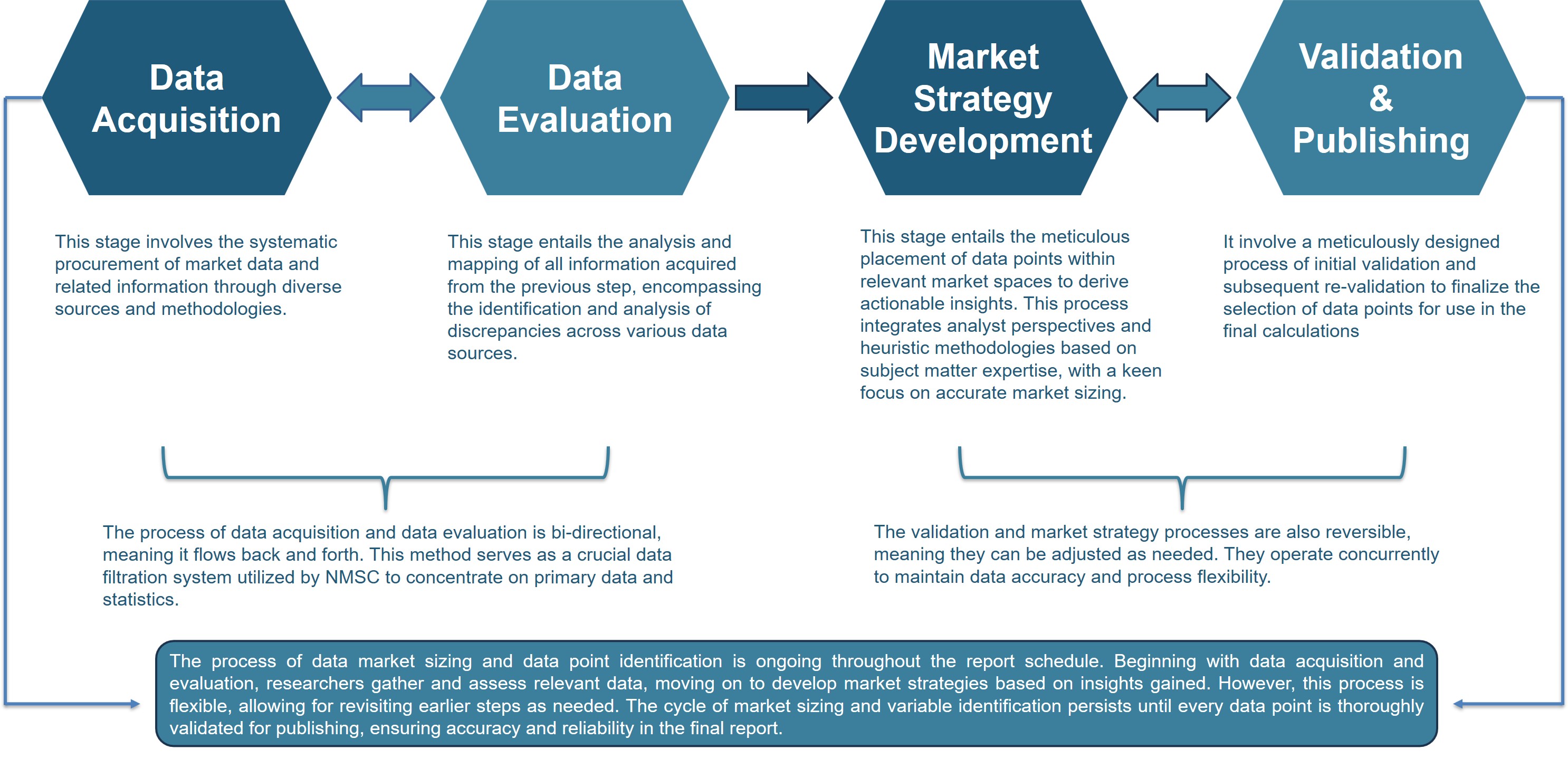



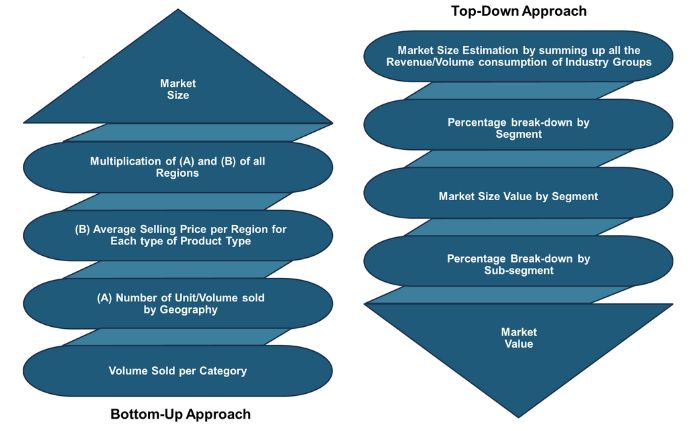
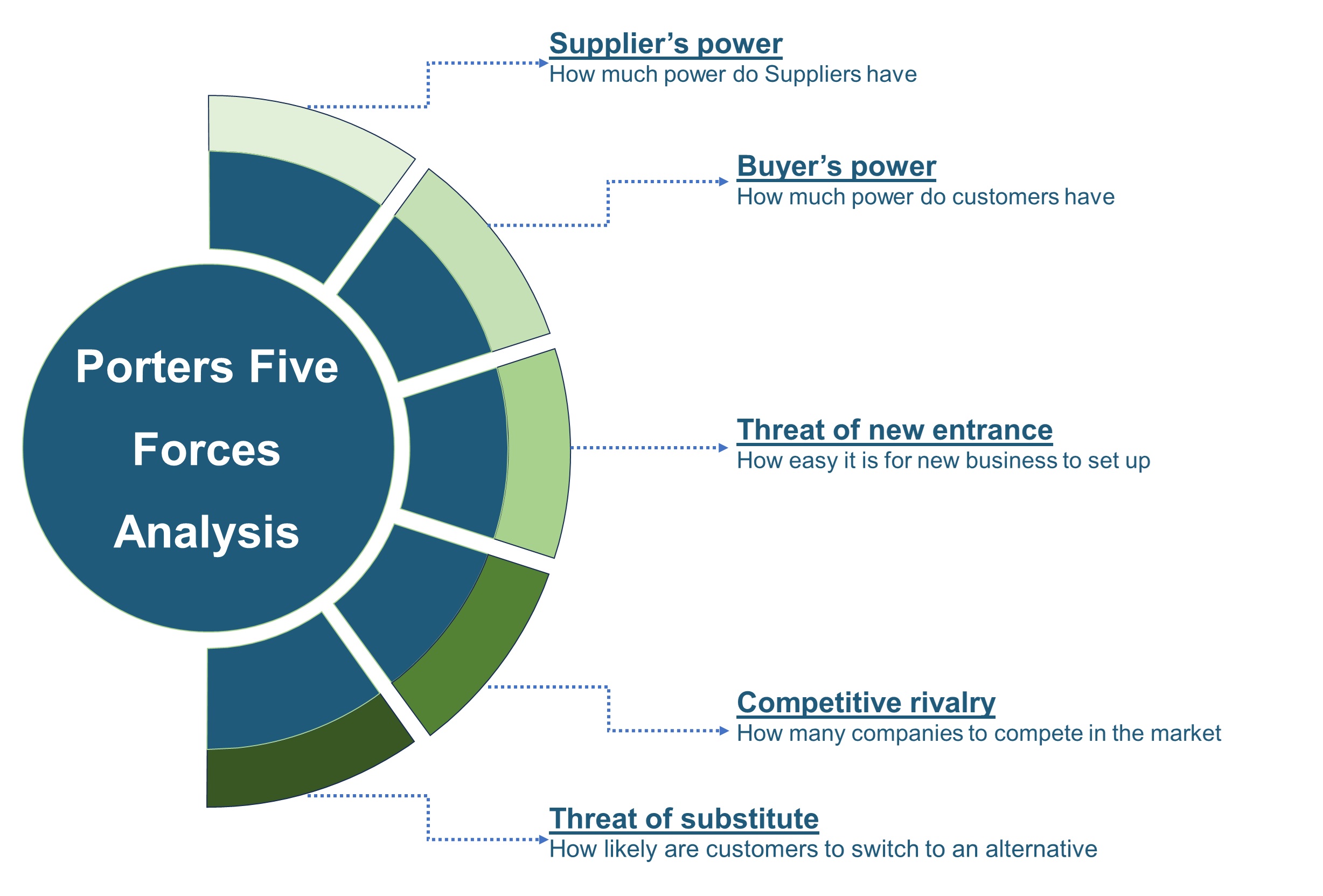


 Speak to Our Analyst
Speak to Our Analyst








